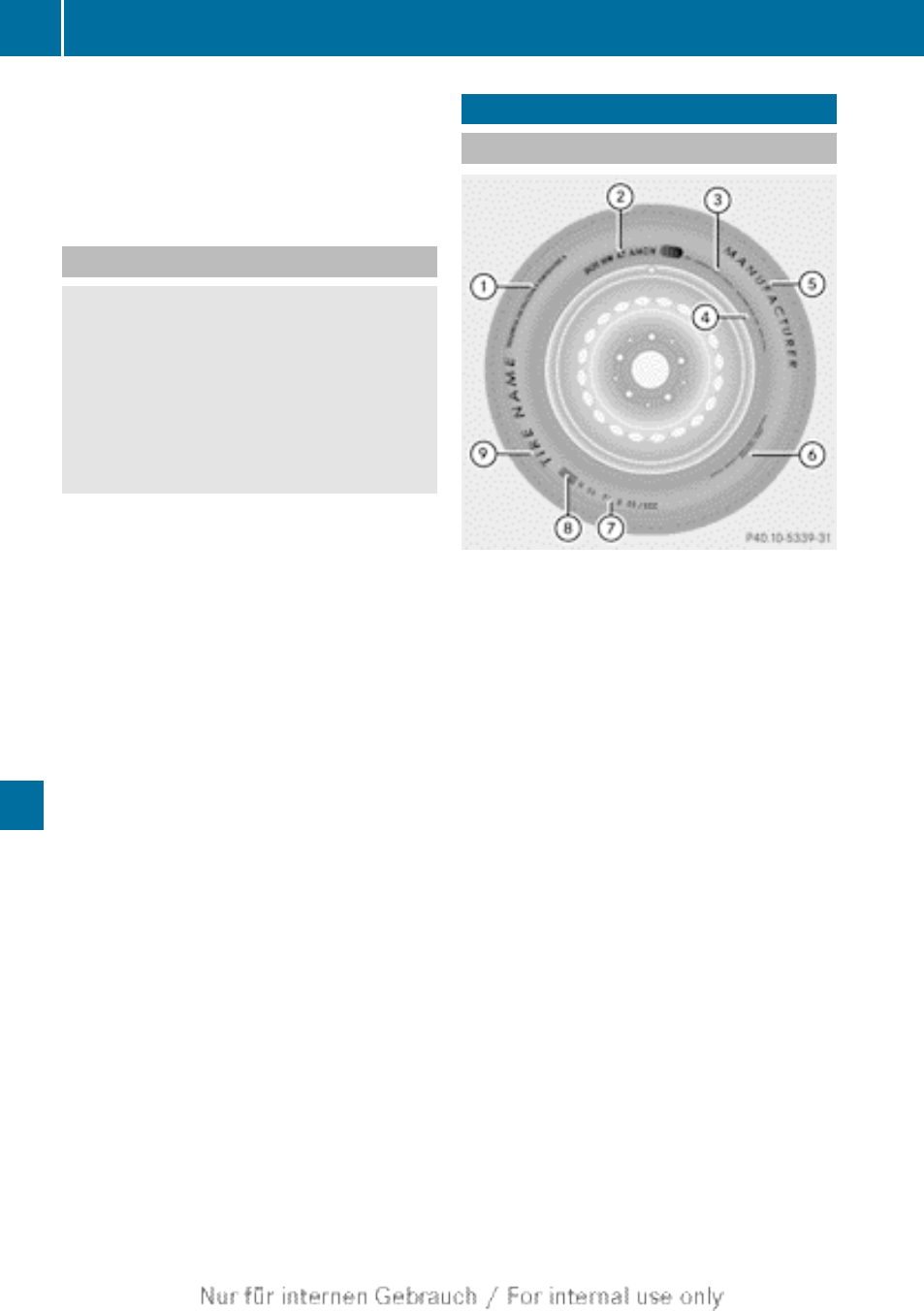Temperature, Tire labeling, Overview of tire labeling – Mercedes-Benz 2012 B Class User Manual
Page 314: Wheels and tires

not covered with ice or snow. Take
appropriate care when driving.
!
Avoid wheelspin. This can lead to damage
to the drive train.
Temperature
G
WARNING
The temperature grade for this tire is
established for a tire that is properly inflated
and not overloaded. Excessive speed,
underinflation, or excessive loading, either
separately or in combination, can cause
excessive heat build-up and possible tire
failure.
The temperature grades are A (the highest),
B, and C. These represent the tire's
resistance to the generation of heat and its
ability to dissipate heat when tested under
controlled conditions on a specified indoor
laboratory test wheel. Sustained high
temperature can cause the material of the tire
to degenerate and reduce tire life, and
excessive temperature can lead to sudden
tire failure. The grade C corresponds to a level
of performance which all passenger car tires
must meet under the Federal Motor Vehicle
Safety Standard No. 109. Grades B and A
represent higher levels of performance on the
laboratory test wheel than the minimum
required by law.
Tire labeling
Overview of tire labeling
The following markings are on the tire in addition
to the tire name (sales designation) and the
manufacturer's name:
:
Uniform tire Quality Grading Standard
(
Y
page 316)
;
DOT, Tire Identification Number
(
Y
page 315)
=
Maximum tire load (
Y
page 310)
?
Maximum tire pressure (
Y
page 304)
A
Manufacturer
B
Tire material (
Y
page 316)
C
Tire size designation, load-bearing
capacity and speed index (
Y
page 313)
D
Load index (
Y
page 315)
E
Tire name
i
Tire data is vehicle-specific and may
deviate from the data in the example.
312
Tire labeling
Wheels and tires